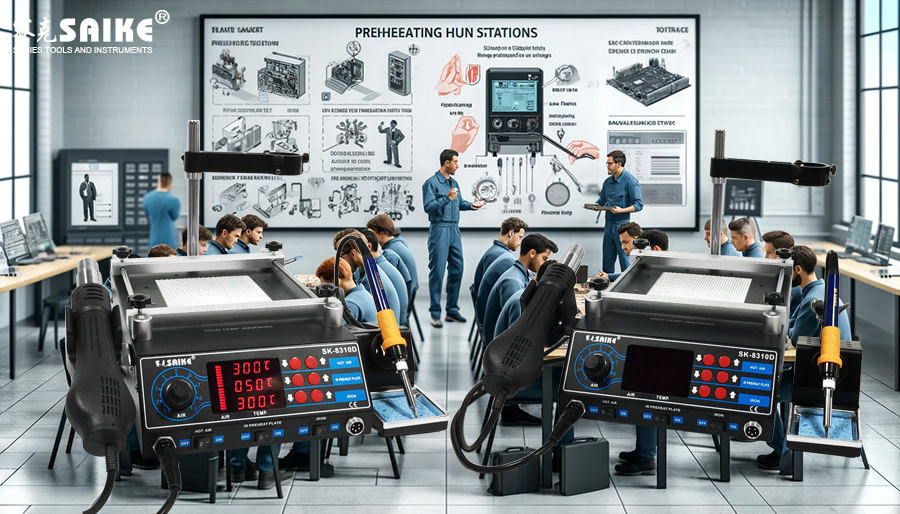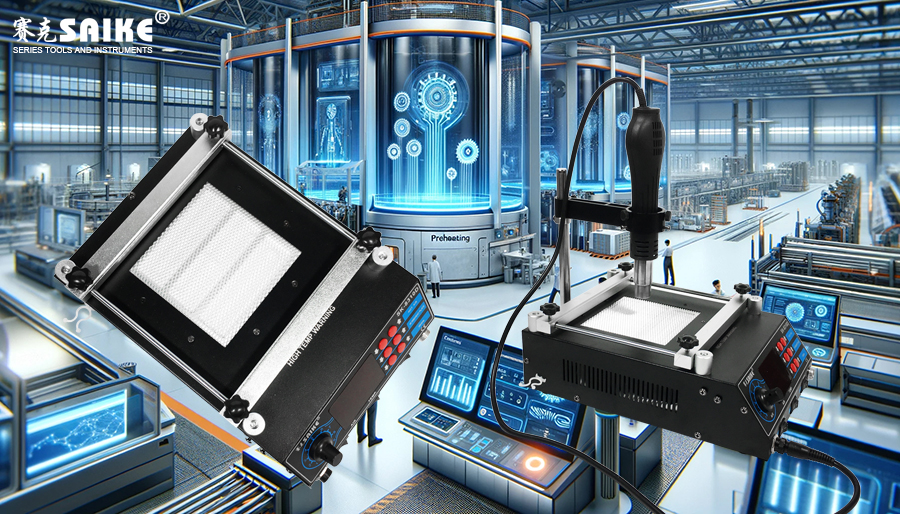
SK-YJ000YRT-KP 100027
In electronic manufacturing and repair training courses, the use and operation of preheating stations constitute a crucial teaching unit. To enhance teaching effectiveness, gathering trainee feedback and engaging in interactive discussions are essential. This article explores trainee feedback on preheating station training, topics for interactive discussions, and how to utilize this information to optimize the training curriculum.
I. The Importance of Trainee Feedback
1.Improving Teaching Quality:
– Trainee feedback aids instructors in understanding the effectiveness of teaching methods and the suitability of content, enabling necessary adjustments and improvements.
2.Updating Course Content:
– With rapid technological advancements, trainee feedback helps teachers update course content promptly, ensuring alignment with industry standards and the latest technologies.
3.Enhancing Trainee Engagement:
– Responding actively to trainee feedback boosts trainees’ sense of participation and satisfaction with the course, thereby improving learning outcomes.
II. Collecting and Analyzing Feedback
1.Feedback Methods:
– Surveys: Collecting trainee feedback on instructor performance, course content, and equipment usage through electronic or paper questionnaires after the course ends.
– Real-time Feedback: Gathering trainees’ questions and suggestions instantly in class via electronic devices or verbally.
2.Feedback Content:
– Operational Difficulty: Trainee feedback on the ease or difficulty of operating the preheating station, including the usability of the device’s user interface and functions.
– Integration of Theory and Practice: Trainee evaluation of how closely the theoretical knowledge in the course aligns with practical operations.
– Technical Issues: Specific technical problems encountered by trainees during the use of the preheating station and the effectiveness of solutions.
III. Topics for Interactive Discussions
1.Best Practices for Preheating Stations:
– Sharing preheating strategies for different types of circuit boards, exploring temperature settings, heating durations, and technology choices.
2.Troubleshooting Skills:
– Discussing common preheating station malfunctions and their solutions to enhance trainees’ problem-solving abilities.
3.Case Studies:
– Analyzing successful and unsuccessful preheating station operation cases to learn from mistakes and ensure soldering quality in practical applications.
IV. Optimizing Teaching Strategies
1.Dynamic Adjustment of Teaching Content:
– Adjusting course emphasis and incorporating content that trainees find interesting or important based on their feedback.
2.Enhanced Practical Training:
– Increasing practical sessions beyond theoretical teaching, allowing trainees more opportunities to operate the preheating station and apply learned knowledge.
3.Technology-Assisted Teaching:
– Utilizing video demonstrations, simulation software, and other technical means to aid trainees in better understanding the working principles and operation processes of the preheating station.
V. Conclusion
Trainee feedback and interactive discussions on preheating stations are crucial for improving teaching quality and trainee learning outcomes. By effectively collecting and analyzing feedback, combined with targeted interactive discussions, the course content can be optimized. This approach also enhances trainees’ operational skills and problem-solving abilities. Such teaching methods ensure that trainees can use preheating stations more effectively in industrial production after completing the training, thereby improving product quality and production efficiency.


